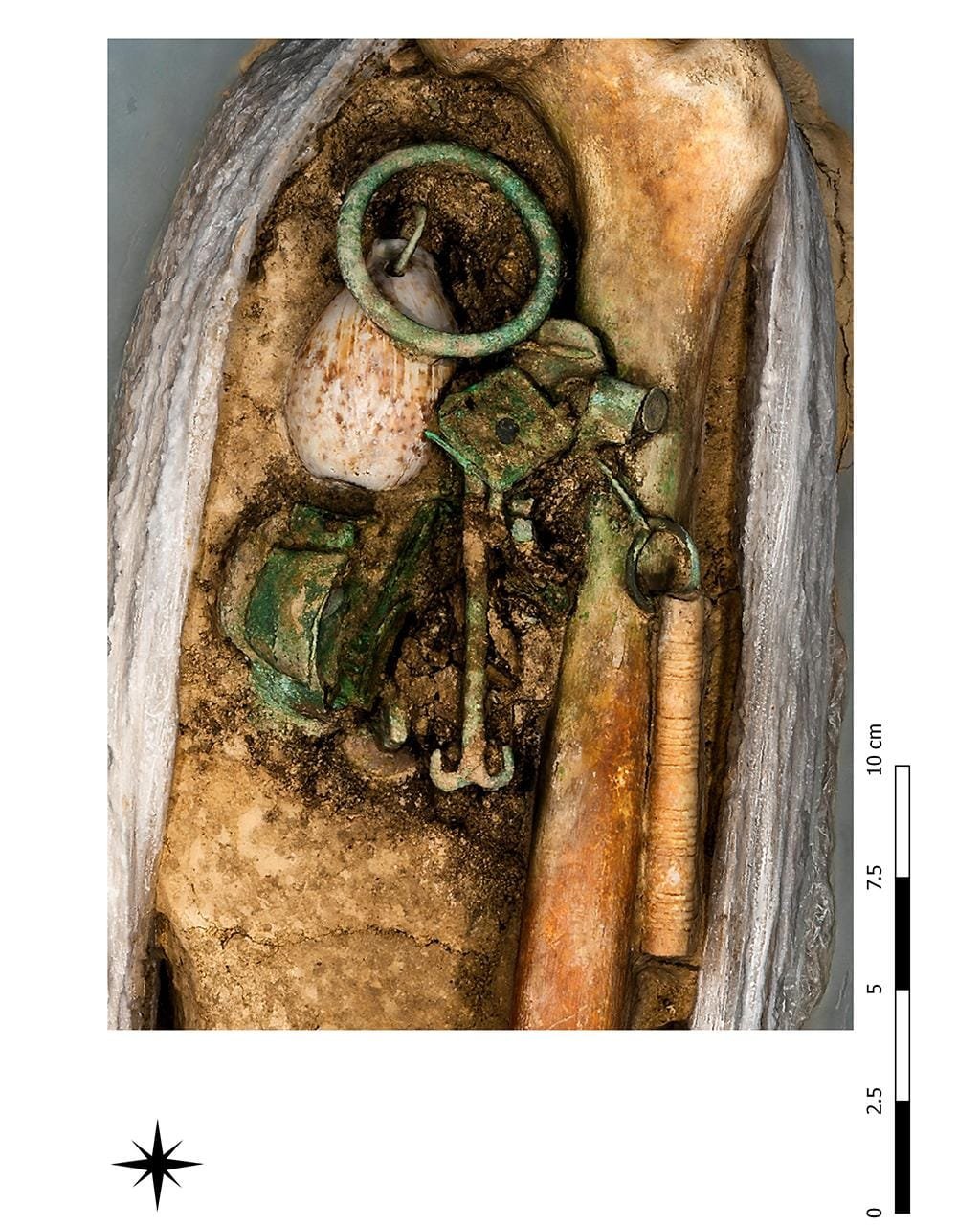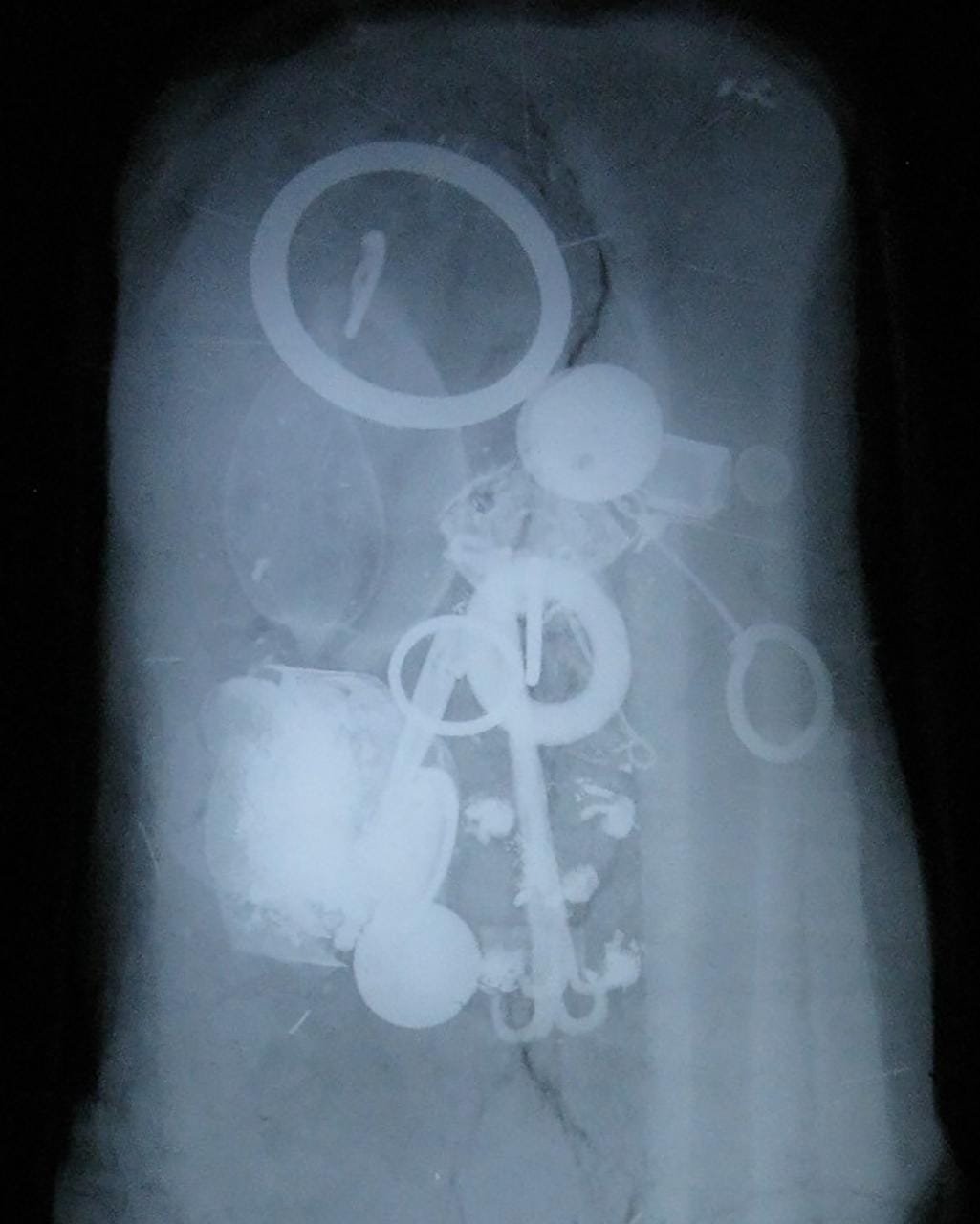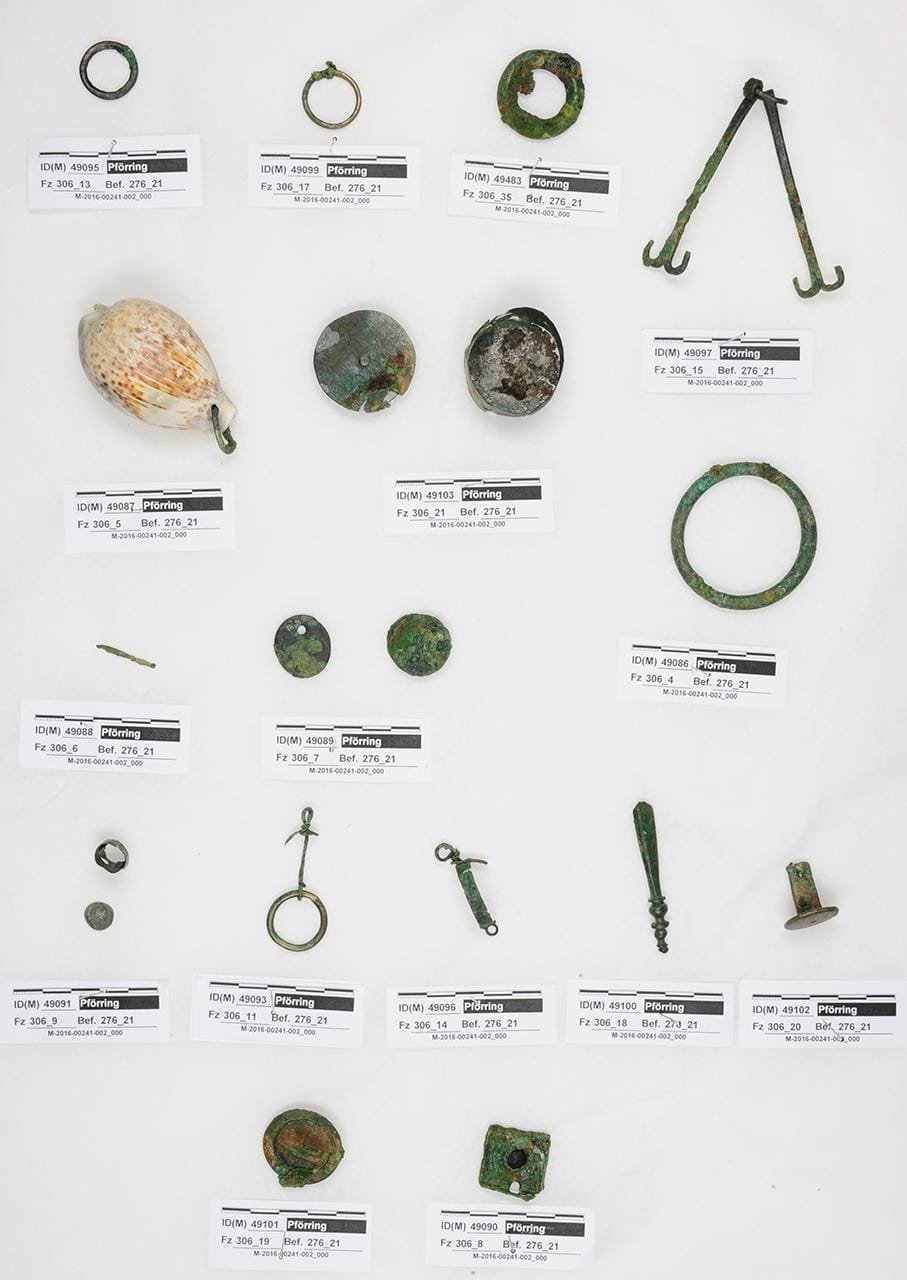In 2016, archaeologists in Pförring, Bavaria, unearthed a 1,500-year-old burial site containing a remarkable collection of artifacts belonging to a young woman from the first half of the 5th century.
 The accessories discovered in Pförring, Bavaria. Credit: Bavarian State Office for the Preservation of Historical Monuments (BLfD)
The accessories discovered in Pförring, Bavaria. Credit: Bavarian State Office for the Preservation of Historical Monuments (BLfD)
This discovery, long puzzling researchers, has recently been better understood thanks to modern restoration and analysis techniques. The collection of items found on the woman’s left thigh, which includes coins, keys, rings, and a decorated walnut pendant, was initially thought to be mere grave goods. However, experts now believe these objects had a deeper symbolic and possibly spiritual significance.
Among the items found were two bronze keys, a bone needle case, several bronze rings, three perforated Roman coins, a decorative disc with a glᴀss inlay, the shell of a sea snail, and the walnut pendant, which was adorned with bronze bands. The objects were connected by leather straps, suggesting they might have been worn as a belt pendant.
 Archaeological find, belt pendant in situ. Credit: BLfD
Archaeological find, belt pendant in situ. Credit: BLfD
This ensemble has drawn comparisons to the modern Bavarian charivari—a chain decorated with coins, talismans, and jewelry, traditionally worn on lederhosen during events such as Oktoberfest. Though the charivari originated in the Napoleonic era, the similarities between the modern accessory and the Pförring find have led scholars to speculate about possible symbolic connections between the two.
 X-ray of the finds. Credit: BLfD
X-ray of the finds. Credit: BLfD
Professor Mathias Pfeil, General Conservator of the Bavarian State Office for the Preservation of Monuments, stated that the find “offers a unique glimpse into the culture along the Danube Limes and the significance attributed to certain objects, which were transformed into powerful symbols and talismans.”
The Danube frontier, known as the Limes, was part of the Roman Empire’s defensive line in the province of Raetia, which bordered the river and served as a crucial communication and transportation route. The region, occupied by Roman settlers and local populations, was strategic in protecting against incursions from Germanic tribes.
 The accessories after being separated and cleaned. Credit: BLfD
The accessories after being separated and cleaned. Credit: BLfD
The most intriguing object in the collection is the walnut-shaped pendant. In ancient times, walnuts were ᴀssociated with fertility, abundance, and magical protection. The pendant, encased in bronze bands, may have served as a talisman to protect the woman in the afterlife. This rare use of a walnut as a decorative item, combined with the symbolic nature of the other artifacts, suggests that the ensemble was not merely a fashion accessory but likely held significant personal or spiritual meaning.
Experts believe that the collection reflects both the cultural environment of the deceased and the Roman influence on the region during late antiquity. While it is unlikely that the Pförring find can be considered a direct ancestor of the modern charivari, the similarities are unmistakable. Both serve as status symbols and as amulets for protection.
Though discovered in 2016, it is only now, with advanced restoration techniques, that archaeologists can fully appreciate the intricate craftsmanship and meaning behind this collection of objects. The Pförring discovery reveals the personal life and status of a young woman from the 5th century, as well as the broader cultural and symbolic practices of the Roman Empire during its waning years along the Danube frontier.
Bavarian State Office for the Preservation of Historical Monuments





